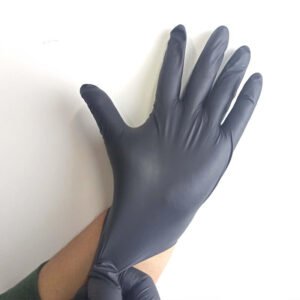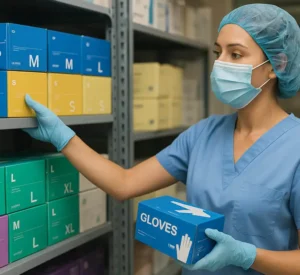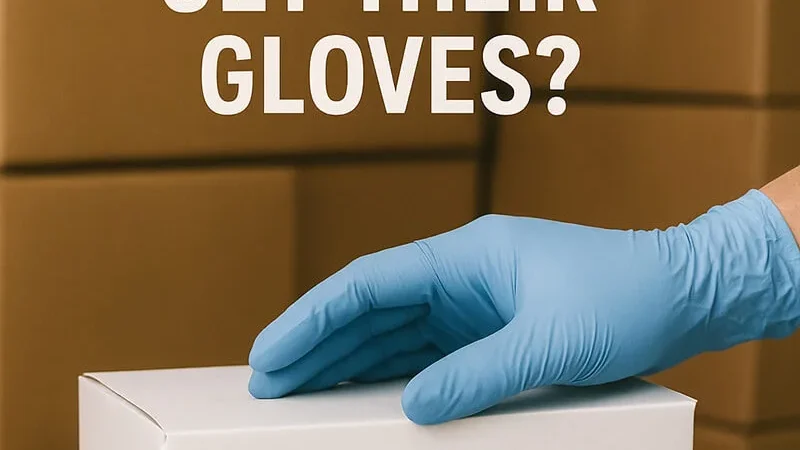Where Do Hospitals Get Their Gloves? A Comprehensive Guide to Medical Glove Supply Chain
Table of Contents
1. Introduction
Medical gloves are essential personal protective equipment (PPE) in healthcare settings, serving as a critical barrier against contamination and infection. Understanding where hospitals source their gloves provides insight into the complex healthcare supply chain that ensures patient and healthcare worker safety. This comprehensive guide explores the various channels through which hospitals procure their medical gloves, from manufacturing to distribution.
2. Types of Medical Gloves Used in Hospitals
2.1 Latex Gloves
Natural latex gloves, made from rubber tree sap, offer excellent elasticity and tactile sensitivity. They provide superior barrier protection and are commonly used in surgical procedures. However, latex allergies have led many hospitals to seek alternatives.

2.2 Nitrile Gloves
Synthetic nitrile gloves have become increasingly popular due to their latex-free composition and excellent chemical resistance. They offer comparable protection to latex gloves while eliminating allergy concerns, making them a preferred choice for many healthcare facilities.
2.3 Vinyl Gloves
Made from polyvinyl chloride (PVC), vinyl gloves are cost-effective and suitable for low-risk procedures. While they offer less durability than latex or nitrile, they serve well for routine examinations and non-invasive procedures.
3. Hospital Glove Procurement Process
3.1 Centralized Purchasing
Many healthcare systems employ centralized purchasing departments that handle procurement for multiple facilities. This approach leverages bulk buying power to negotiate better prices and standardize products across the organization. Centralized procurement teams evaluate suppliers, negotiate contracts, and manage relationships with glove manufacturers and distributors.
3.2 Group Purchasing Organizations (GPOs)
Group Purchasing Organizations represent a significant procurement channel for hospitals. These organizations aggregate purchasing volume from multiple healthcare facilities to negotiate favorable contracts with suppliers. Major GPOs like Premier, Vizient, and HealthTrust handle billions of dollars in medical supply purchases annually, including medical gloves.
3.3 Direct Manufacturer Contracts
Large hospital systems sometimes negotiate directly with glove manufacturers to secure better pricing and ensure supply continuity. This approach is particularly common for high-volume facilities that can meet minimum order requirements set by manufacturers.
4. Supply Chain Challenges
4.1 Pandemic Impact
The COVID-19 pandemic highlighted vulnerabilities in the medical glove supply chain. Demand surged while manufacturing faced disruptions, leading to shortages and price increases. Many hospitals had to diversify their supplier base and increase inventory levels to ensure adequate supply.
4.2 Quality Control and Standards
Hospitals must ensure their glove suppliers meet strict quality standards, including FDA regulations in the United States and CE marking in Europe. Quality issues can compromise patient safety and lead to regulatory violations, making supplier vetting a critical process.
4.3 Cost Management
Medical gloves represent a significant expense for hospitals, with costs varying based on material type, quality grade, and market conditions. Effective procurement strategies must balance cost control with quality requirements and supply security.
5. How Hospitals Select Glove Suppliers
5.1 Quality Standards and Certifications
Hospitals evaluate suppliers based on regulatory compliance, including FDA approval, ISO certifications, and adherence to ASTM standards. Quality management systems and manufacturing facility audits are essential components of supplier selection.
5.2 Pricing Considerations
While cost is important, hospitals must consider total value including product quality, service levels, and supply reliability. Long-term contracts often provide price stability and guaranteed supply, which can be crucial during market volatility.
5.3 Reliability and Delivery
Supply chain reliability is paramount in healthcare settings. Hospitals evaluate suppliers on their ability to maintain consistent delivery schedules, respond to urgent orders, and provide supply chain transparency.

6. Inventory Management and Storage
Effective glove procurement extends beyond supplier selection to include inventory management strategies. Hospitals must balance carrying costs with the need to ensure adequate supply. Many facilities use automated inventory systems and establish par levels based on usage patterns and lead times.
Proper storage conditions are essential to maintain glove quality and extend shelf life. Temperature and humidity control, protection from UV light, and proper handling procedures all impact product integrity.
7. Future Trends in Medical Glove Procurement
The medical glove procurement landscape continues to evolve with several emerging trends:
- Supply Chain Diversification: Hospitals are reducing dependence on single regions or suppliers
- Sustainable Materials: Increasing focus on eco-friendly glove options and recycling programs
- Digital Procurement: Implementation of e-procurement platforms and supply chain analytics
- Strategic Stockpiling: Maintaining higher inventory levels for critical PPE items
- Near-shoring: Some facilities are seeking suppliers closer to their operations to reduce supply chain risks
8. Conclusion
Hospital glove procurement is a complex process involving multiple suppliers, procurement strategies, and quality considerations. While traditional channels like GPOs and direct manufacturer relationships remain important, the COVID-19 pandemic has emphasized the need for supply chain resilience and diversification.
Successful glove procurement requires balancing cost, quality, and supply security while maintaining compliance with regulatory standards. As the healthcare industry continues to evolve, hospitals must adapt their procurement strategies to ensure reliable access to this essential protective equipment.
